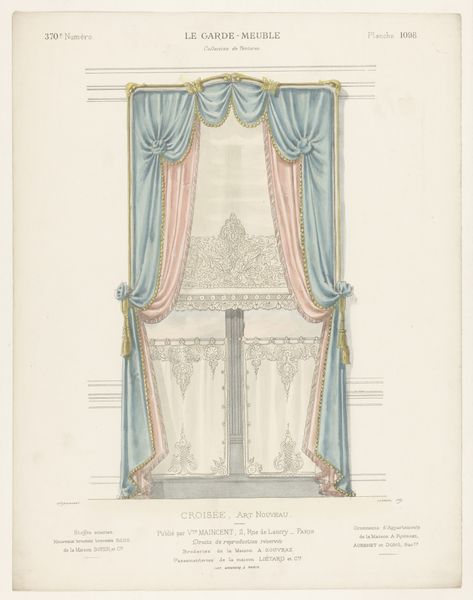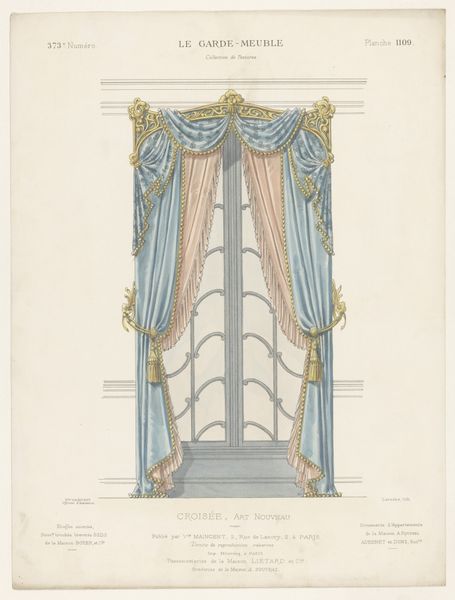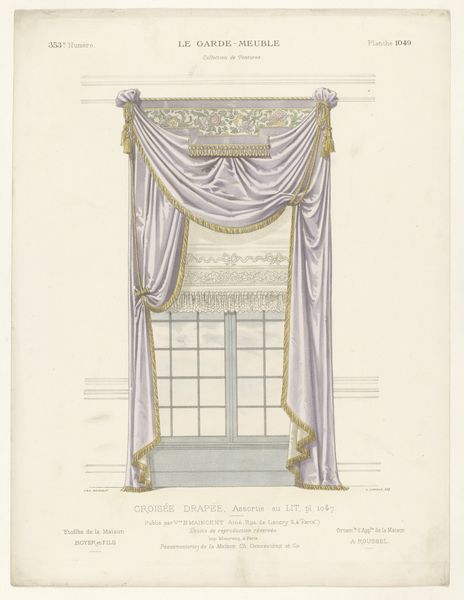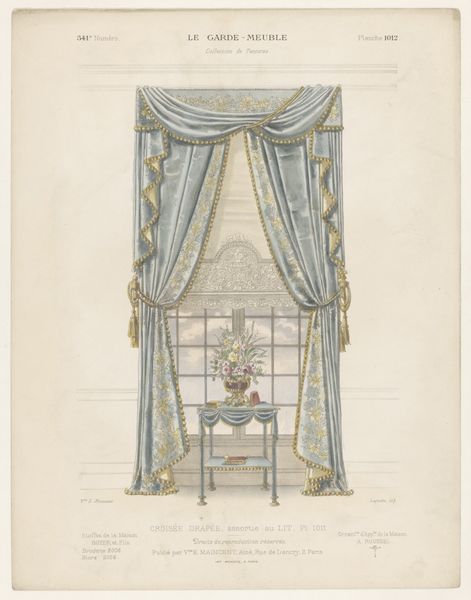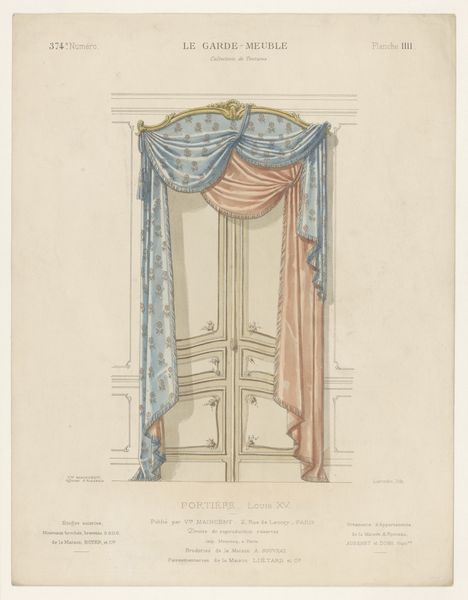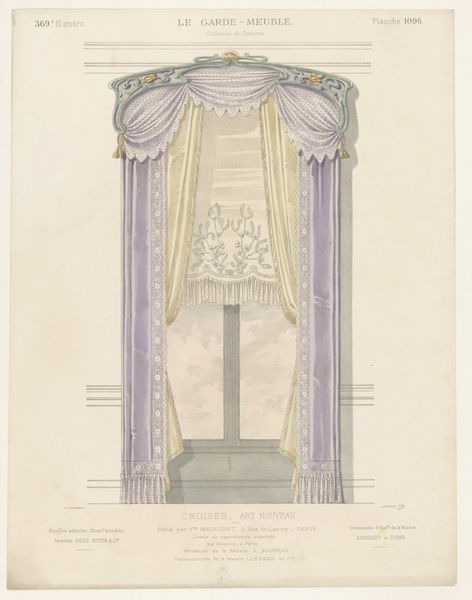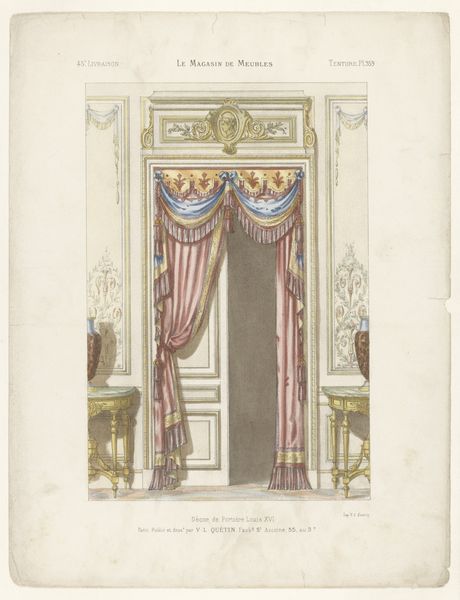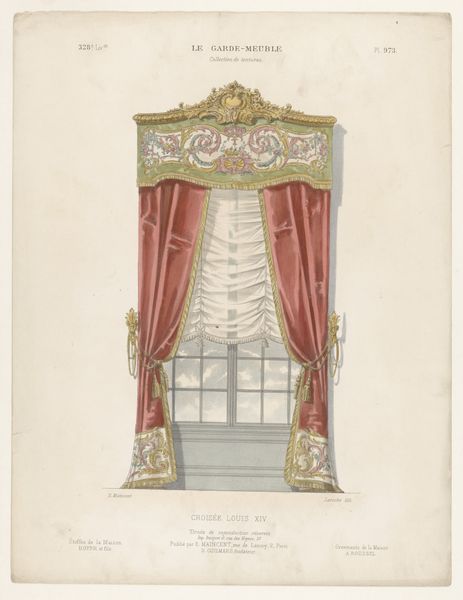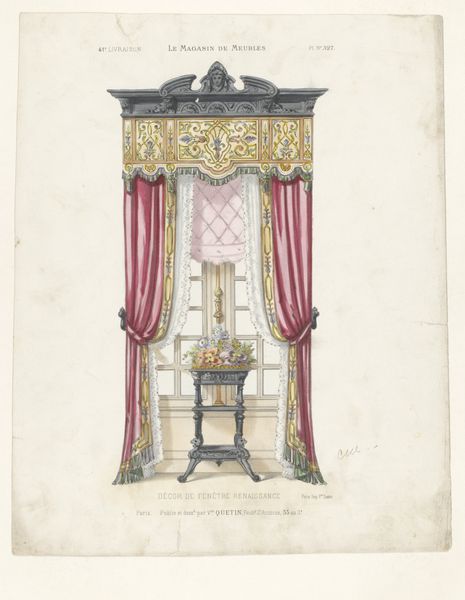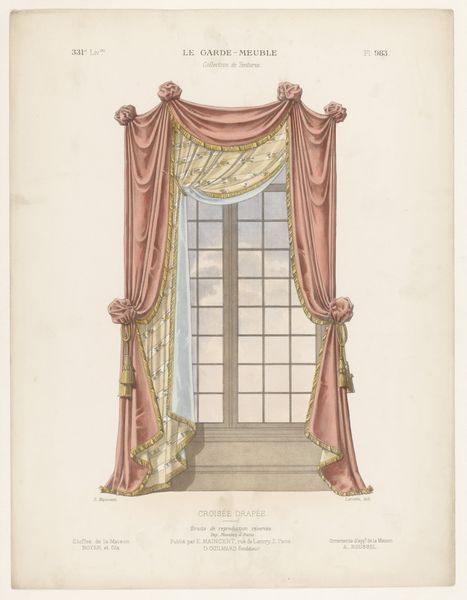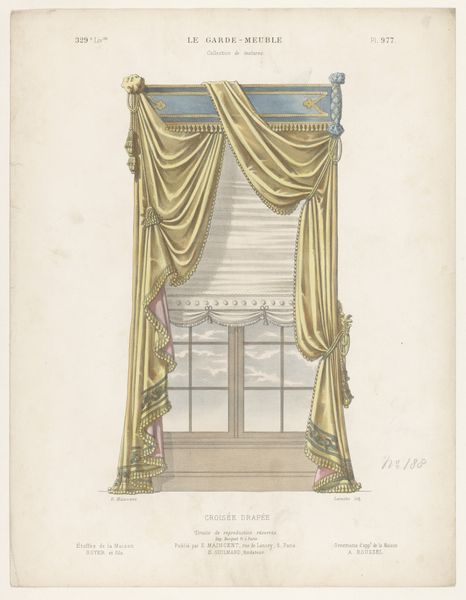
drawing
#
drawing
#
art-nouveau
#
cityscape
#
decorative-art
Dimensions: height 360 mm, width 275 mm
Copyright: Rijks Museum: Open Domain
Editor: This is "Venster met gordijnen," a drawing by Léon Laroche, dating from around 1895 to 1910. It strikes me as quite opulent, showcasing detailed curtains. What can you tell us about its interpretation? Curator: Well, immediately I am drawn to consider this through a lens of class and gender. Curtains like these speak volumes about domesticity and the performance of wealth during the Art Nouveau period. These weren’t merely window coverings; they were statements about identity. Editor: How so? Curator: Think about the labor involved in creating these elaborate designs – the embroidery, the lace. It reflects not only the financial means to commission such work but also the social structures that relied on female domestic labor, both visible and invisible, right? Were these created by the lady of the house or by a hired seamstress, what power structures can we infer from this drawing? Editor: That's fascinating, I never thought about it that way. It’s like the drawing itself is revealing the story of labour relations and interiority. Curator: Precisely! And the choice of "feminine" colours—pale blues and pinks—reinforces societal expectations around gender roles within the home. It begs us to question whose gaze this aesthetic catered to, and who was excluded from this vision of domestic perfection. This goes far beyond decorative art. Editor: This really transforms my initial view of it, revealing the potent message in what I considered decorative details. Curator: Absolutely! It makes you rethink about design and social meaning.
Comments
No comments
Be the first to comment and join the conversation on the ultimate creative platform.
